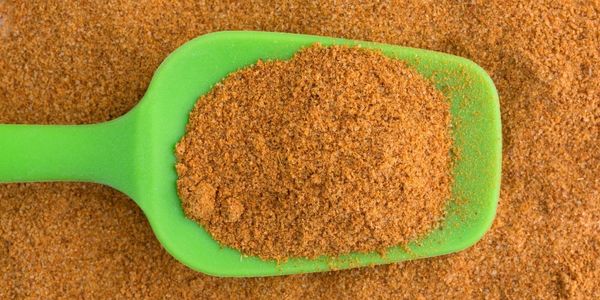Paprika is the most adaptable spice that adds rich color and delicious flavors to your recipe. If you are wondering which ingredients can be used as substitutes for paprika, you have landed at the right place. Read on to find out.
A member of the family, Capsicum annuum, paprika is derived from the dried pods of chili pepper or bell pepper. Paprika comes in several colors with different heat levels ranging from brilliant orange to bright red.
It works wonders when used as a garnish on desserts and salads, improving the overall presentation of the dish. If you are in the middle of preparing your favorite dish and have run out of paprika, do not worry.
Instead, check out these substitutes for paprika that are here to your rescue.
Outline
11 Best Substitutes for Paprika
1. Cayenne Pepper

Cayenne pepper has a starkly similar appearance to paprika, so much so that the two ingredients are often confused for each other. Popular for adding a similarly bright color to the dish, cayenne is an ideal substitute for paprika.
Cayenne pepper has the same flavor profile as paprika but is much stronger and spicy. It can be combined with a sweetener like honey or sugar to maintain the distinctively sweet flavor of paprika when used as a substitute in a dish.
How to substitute: Use one teaspoon of cayenne pepper to replace two teaspoons of paprika.
2. Cajun spice

Cajun spice is a combination of several ingredients including black pepper, cayenne pepper, white pepper, garlic powder, thyme, onion powder, red pepper flakes, and oregano.
Having a similar level of spiciness as paprika, cajun spice serves as its ideal substitute. It has a thick texture and smokey taste, with undertones of pepper and garlic. However, due to its orange hue, it does not provide a bright red color to your recipe.
How to substitute: Use a 1:1 ratio to replace cajun spice for paprika.
3. Chipotle Powder

If you are looking for a paprika substitute that would satisfy your craving for a hot and smoky recipe, the chipotle powder is your ideal match. Chipotle powder is prepared from jalapenos that are dried with smoke and have a thick, sooty flavor with an earthy and spicy taste.
It has a darker red color than paprika and lacks the brightness that Hungarian or ordinary paprika provides. It works wonders in barbecue sauces, chilis, and grilling rubs.
How to substitute: Begin by adding one-fourth teaspoon of chipotle powder for one teaspoon of paprika. Further, adjust the amount according to the level of spiciness you desire in your dish.
4. Aleppo Chili Powder

Although not an ideal ingredient to be found in your kitchen cabinets, Aleppo chili powder works as a fantastic substitute for paprika. So, if you are lucky enough to have it at hand, do not hesitate to use it as a paprika substitute.
Aleppo chili powder provides a variety of flavors to your dish with notes of earthiness, sweetness, the tang of tomatoes, and smokiness. It has mild heat and resembles paprika in color.
Popularly used in Middle Eastern cuisine, Aleppo chili powder is used to season dips, meat, beans, and salads. You must be cautious with the quantity utilized as it can taste a bit spicy and salty.
How to substitute: Use a 1:1 ratio when substituting Aleppo chili powder for hot paprika.
However, one-fourth teaspoon of Aleppo chili powder will work well for one teaspoon of regular paprika. You can further alter this according to your desired taste.
5. Black Pepper

If you are not very intent on achieving the bright red color of paprika but desire its spiciness and heat in your dish, black pepper might serve you well.
A staple in many households, black pepper has a similar flavor profile to paprika and functions as an ideal substitute for it. Black pepper is frequently used to spice up a meal without giving it the same crimson color.
How to substitute: An equal quantity of black pepper can be used to replace paprika in any dish.
6. Ancho Chili Powder

Ancho chili powder is a great alternative for attaining a similar flavor and bright red color if your recipe asks for paprika. Ancho chilies are roasted and dried to make ancho powder that provides a sweet, mild, and smoky flavor to your dish.
Although it is spicy and smoky than traditional paprika, it serves as a top paprika substitute. Also, do not confuse conventional chili powder, which is typically a combination of spices like oregano, cumin, chili peppers, garlic, and paprika, with ancho chili powder.
How to substitute: A half teaspoon of ancho chili powder can satisfactorily replace one teaspoon of paprika.
7. Chili Powder

Easily available and the most common ingredient used in the kitchen, chili powder is another fantastic substitute for paprika.
As chili powder is prepared from a mixture of several spices, it has distinct flavor profiles including savory, earthy and spicy. Although chili powder has a higher heat level than standard paprika, it is comparable to Hungarian or hot-smoked paprika.
Hence, it can only be used in a small amount to add taste and color to your recipe. Chili powder works best in hummus, eggs, or curries.
How to substitute: Use half a teaspoon of chili powder to replace one teaspoon of paprika.
8. Hot Sauce

If you are concerned with the flavor and not the appearance of your dish, try using hot sauce as a substitute for paprika. Any sauce prepared from chilis can ideally work as a hot sauce.
Remember that hot sauces have a diverse range of heat levels. So, make sure to taste the sauce before using it in your recipe. Hot sauces do not give a deep red hue but only provide your dish with paprika-like flavor and heat.
How to substitute: One teaspoon of hot sauce can satisfactorily replace one teaspoon of paprika.
9. Gochugaru Pepper

A fiery red pepper mix from Asia, gochugaru comes next on the list of paprika substitutes. If you are a fan of Korean dishes, chances are high that you will have gochugaru pepper handy in your kitchen cabinet.
It can also be referred to as hot pepper flakes, red pepper flakes, or Korean chili powder. Gochugaru provides a dense flavor and rich color to your dish, similar to paprika. However, it is milder and its quantity must be adjusted accordingly.
How to substitute: Begin by adding one teaspoon of gochugaru pepper to one teaspoon of paprika. Further, you can adjust this quantity according to taste and preference.
10. Red Pepper Flakes

A variety of pepper flakes are dried and crushed to produce red pepper flakes that can ideally substitute paprika in any recipe. Based on the kind of peppers used, the pepper flake mixture has a fiery flavor with an occasional sense of spiciness.
They differ from paprika in terms of color and texture. We recommend grounding red pepper flakes before adding them to your recipe to ideally replicate paprika. Also, be cautious with the quantity used, as they are spicier than paprika.
How to substitute: Start by adding one-third teaspoon of red pepper flakes for one teaspoon of paprika. You can further add more to achieve your desired flavors.
11. Bell Pepper

If you have run out of all the alternatives, or do not have them handy in your kitchen, making your own paprika could be the best choice.
All you need are some bell peppers and a cotton bag. Dry these bell peppers by placing them in a dehydrator or baking at 120 F. Now, ground these dried peppers by rubbing them against a cotton bag or using a grinder.
Let the mixture sit for a while before using, and you are good to go. Here you have it, your homemade paprika.
How to substitute: Use a 1:1 ratio to replace bell pepper for paprika.
Hopefully, with these substitutes for paprika, you will never get stuck while preparing a dish that calls for it. We are sure that the spicy undertones and vibrant hue of all these alternatives will not leave you disappointed.


